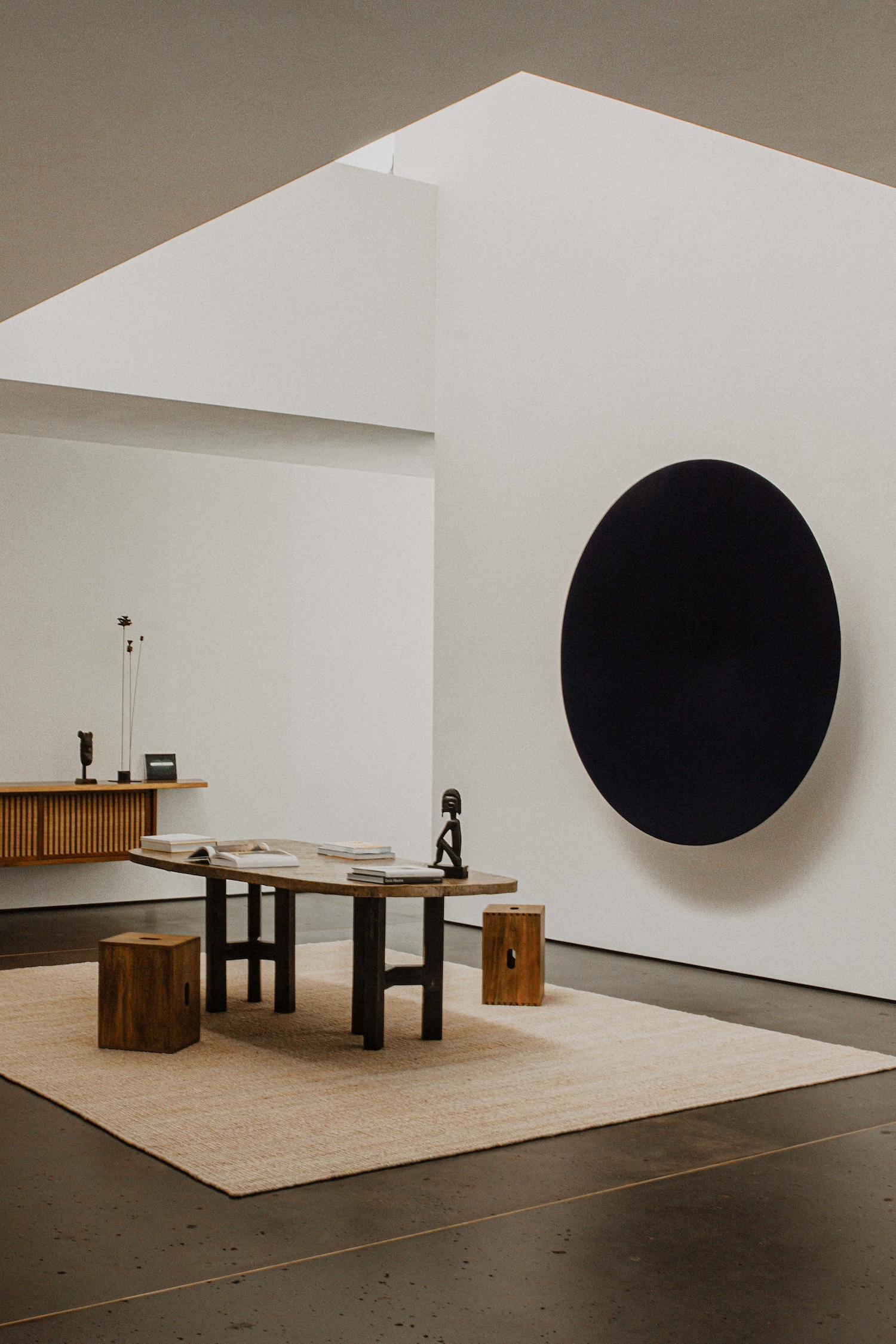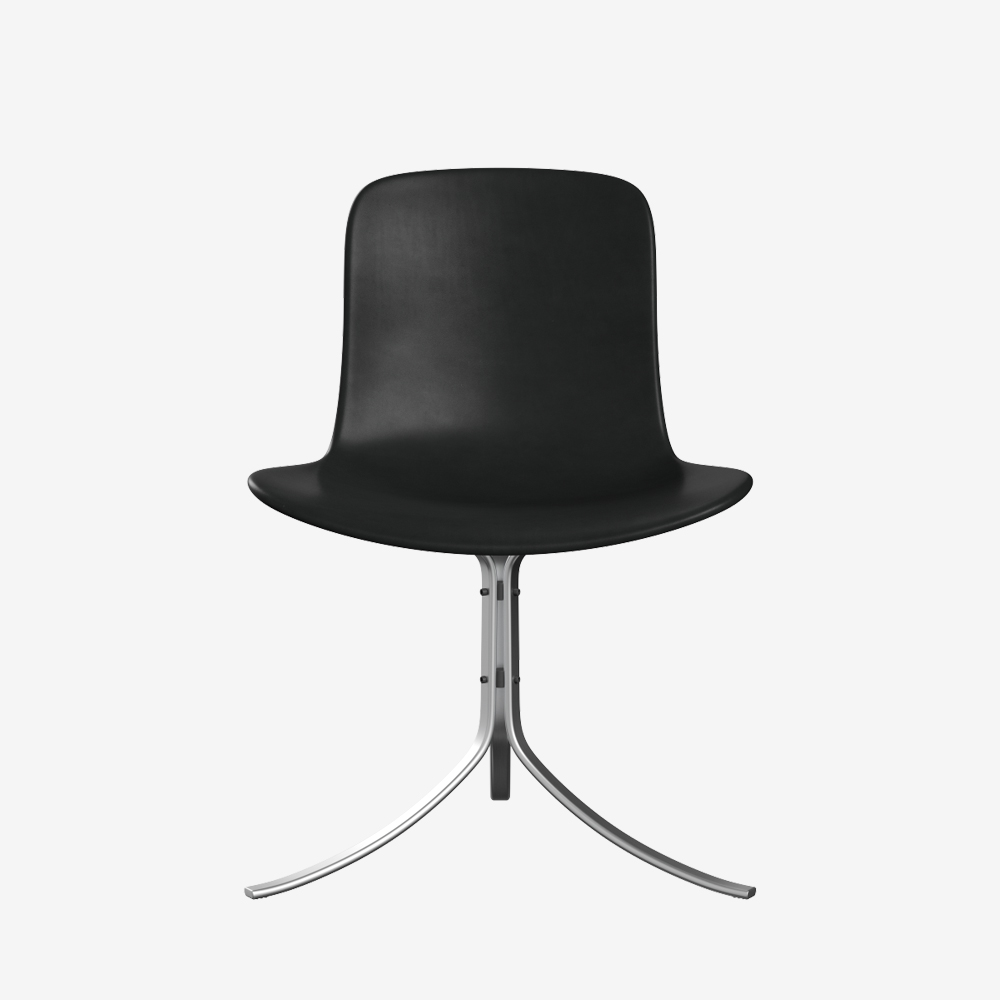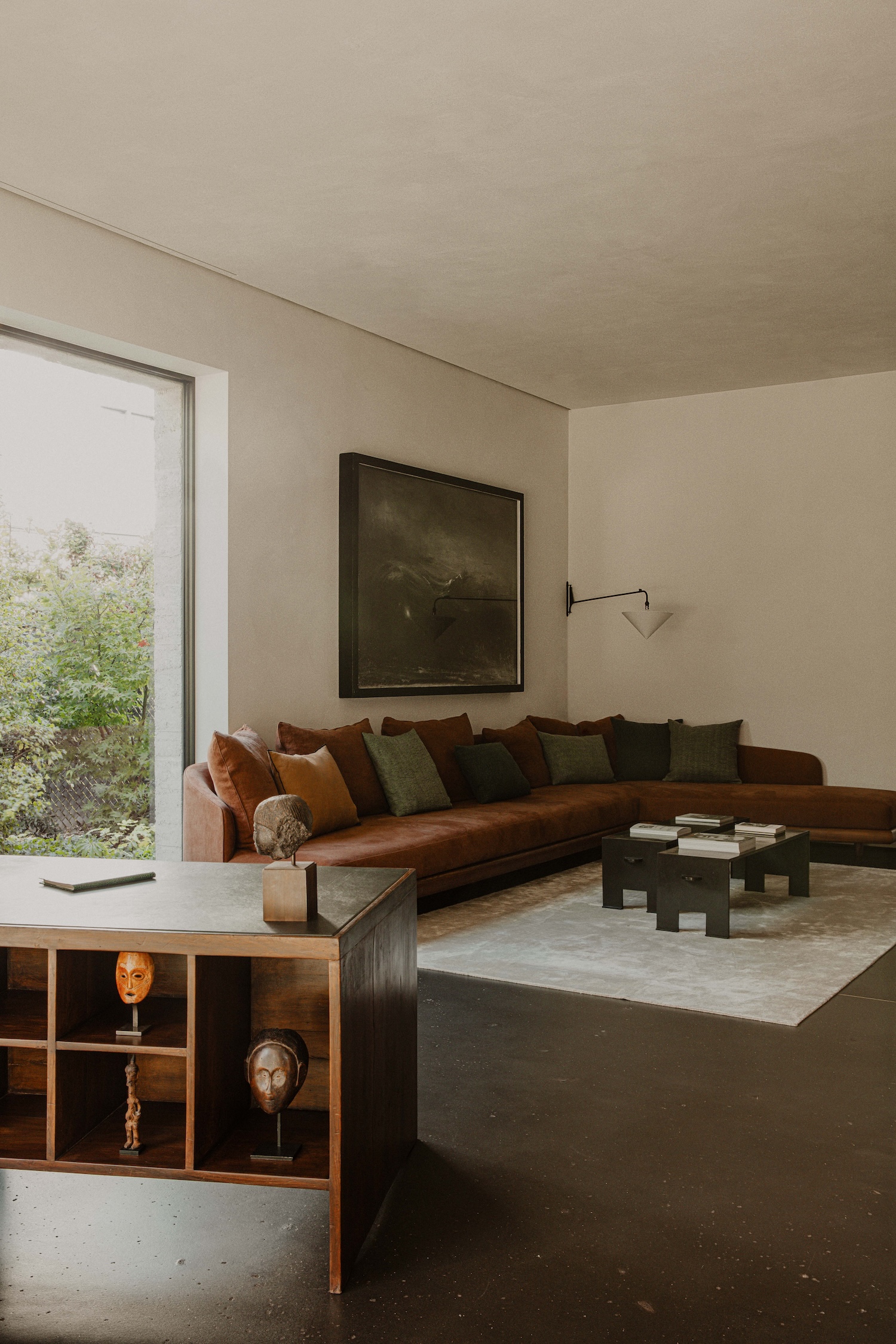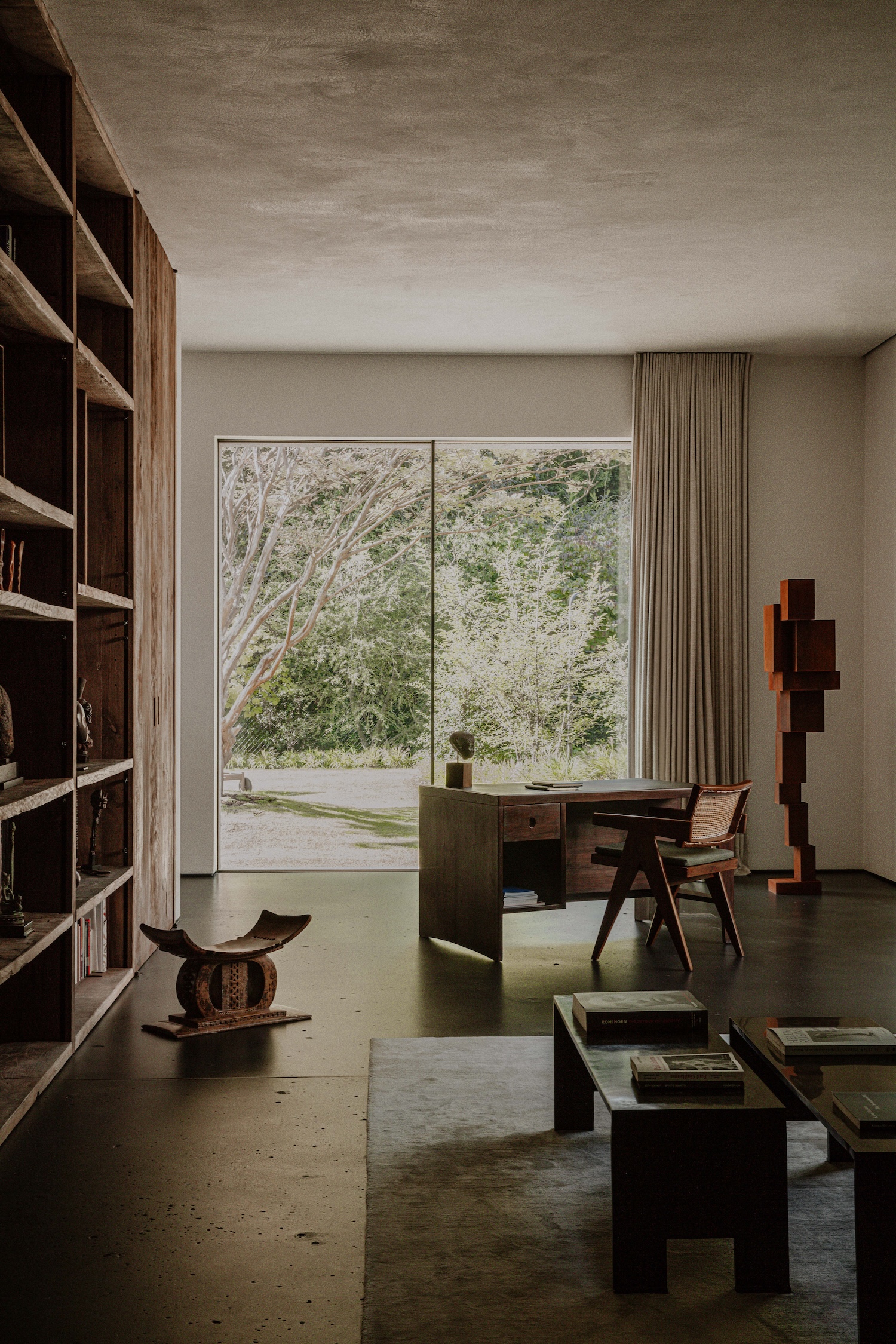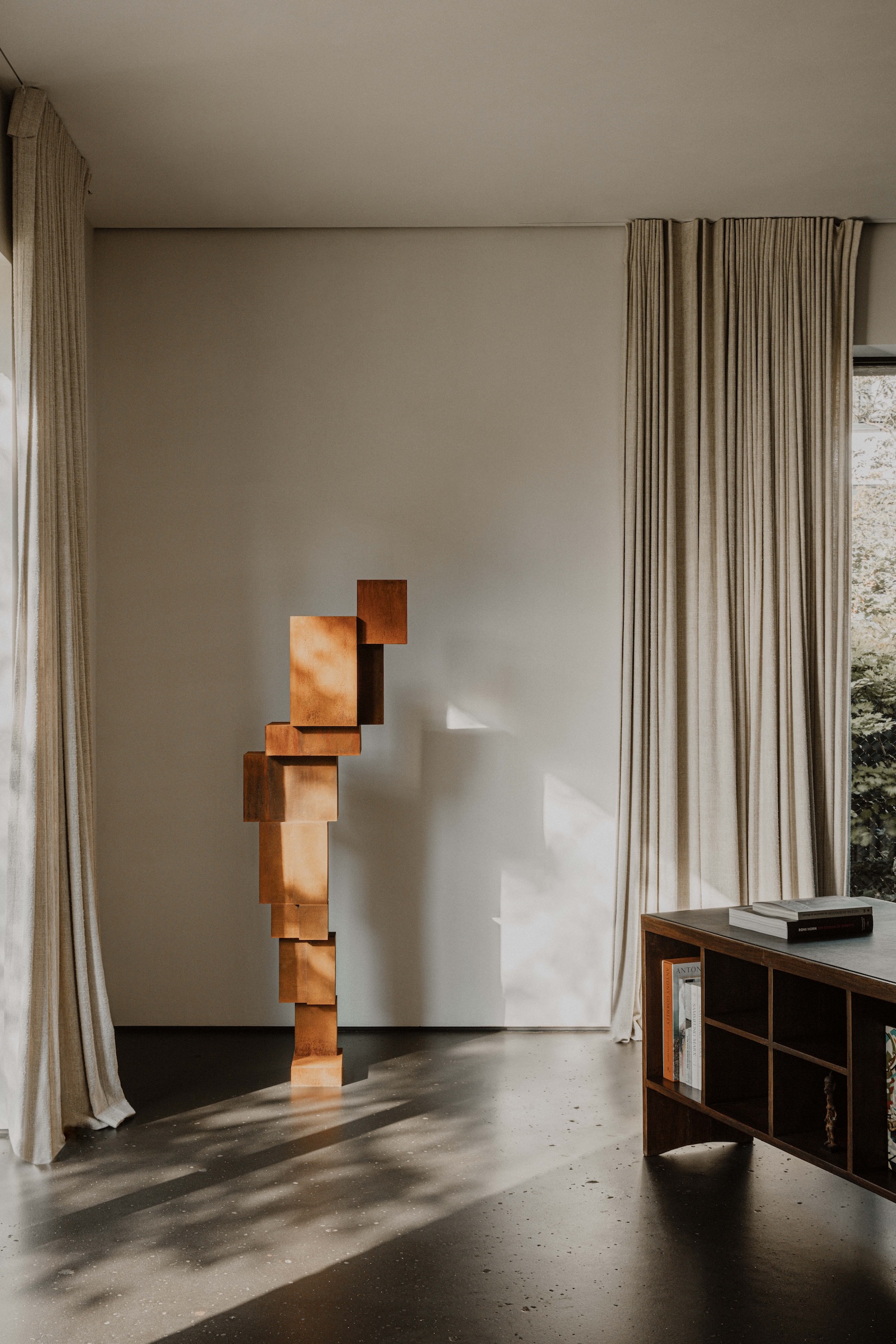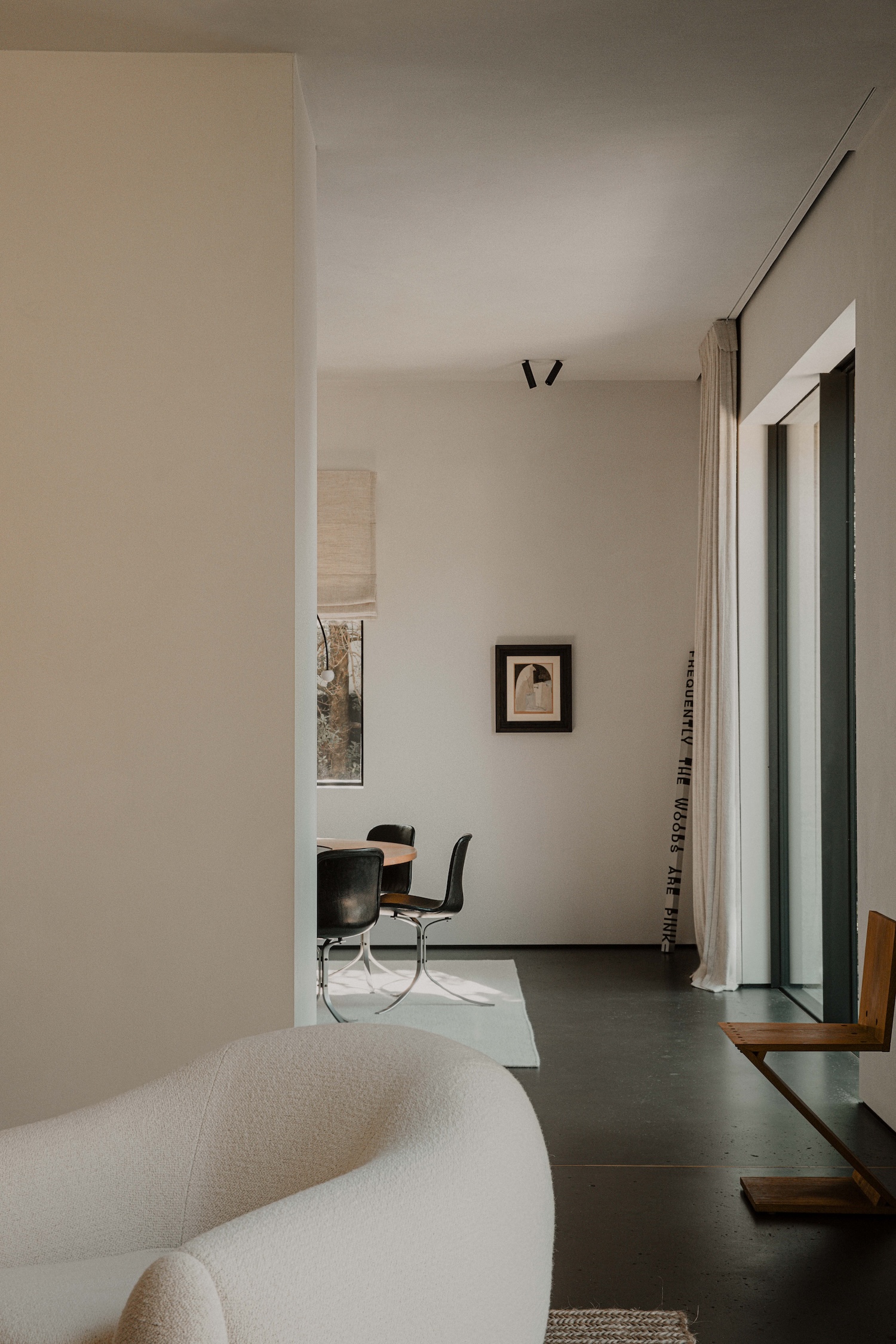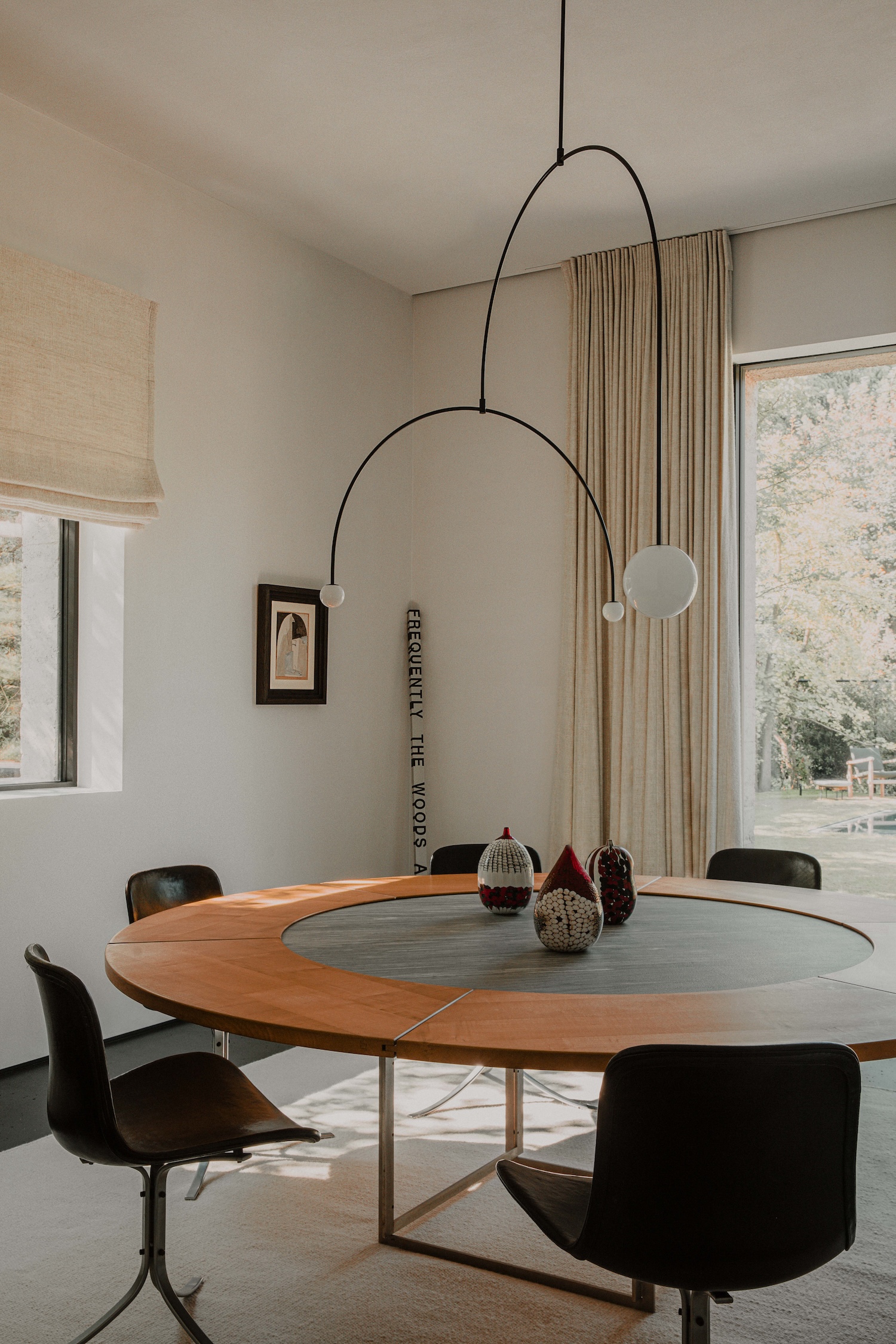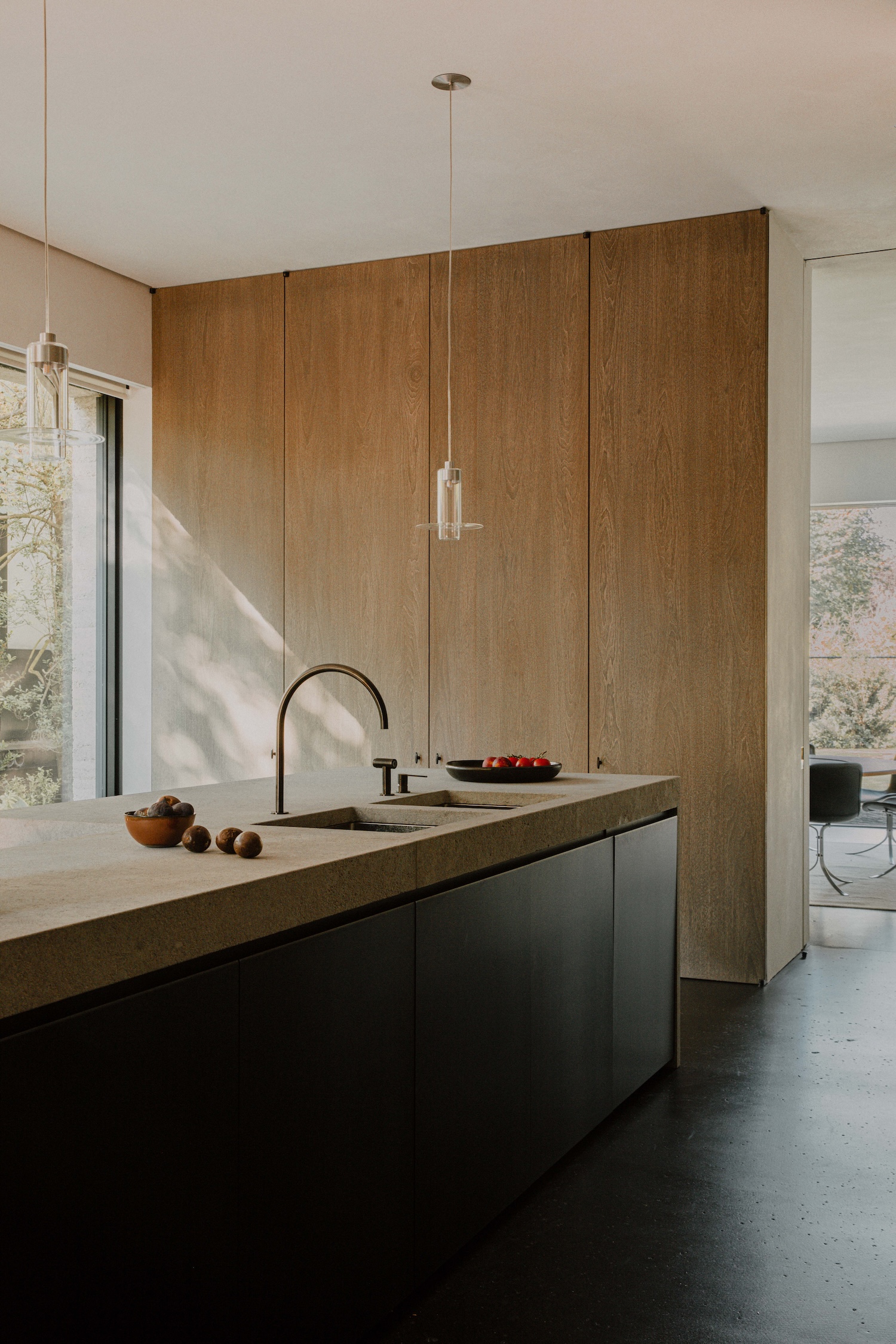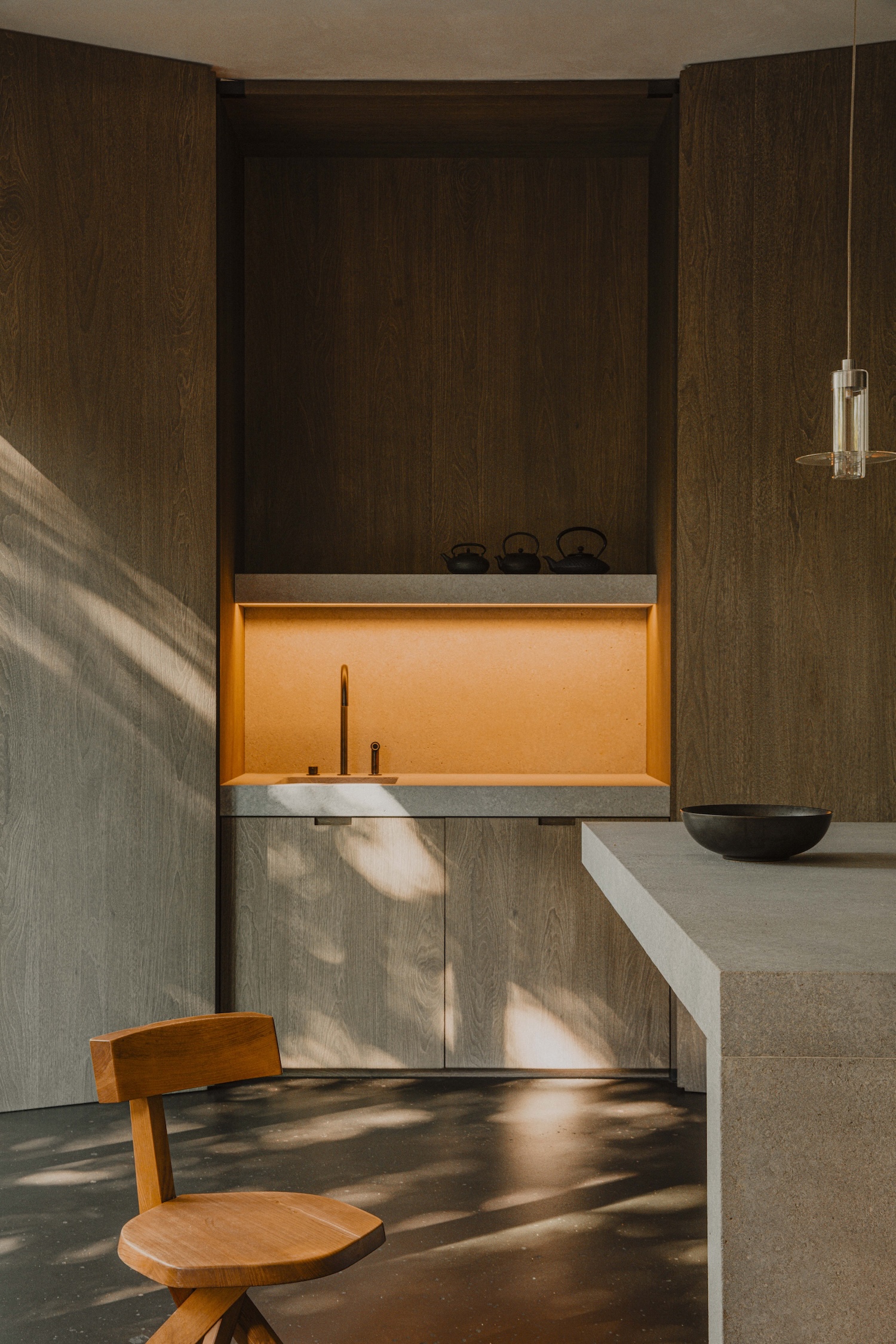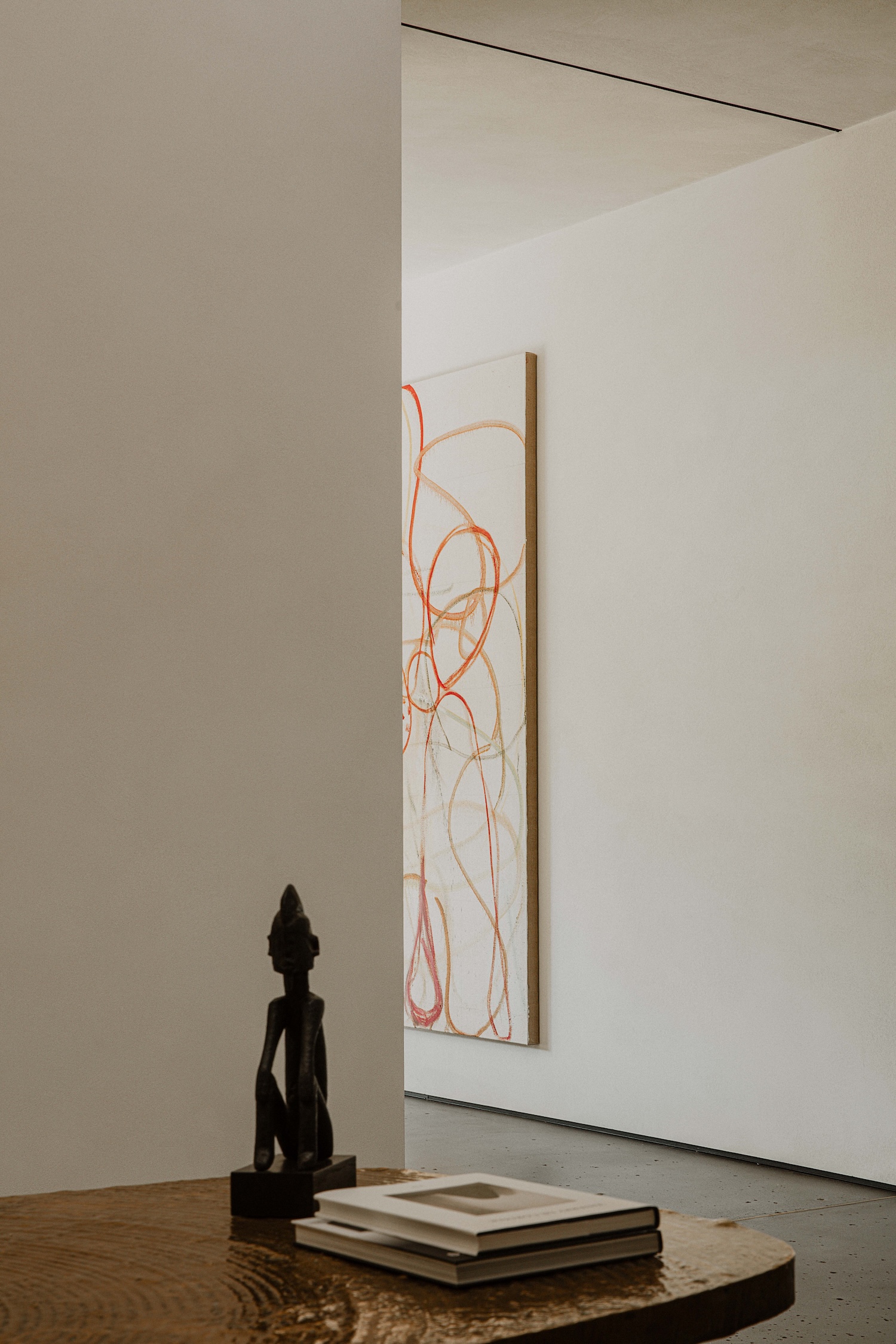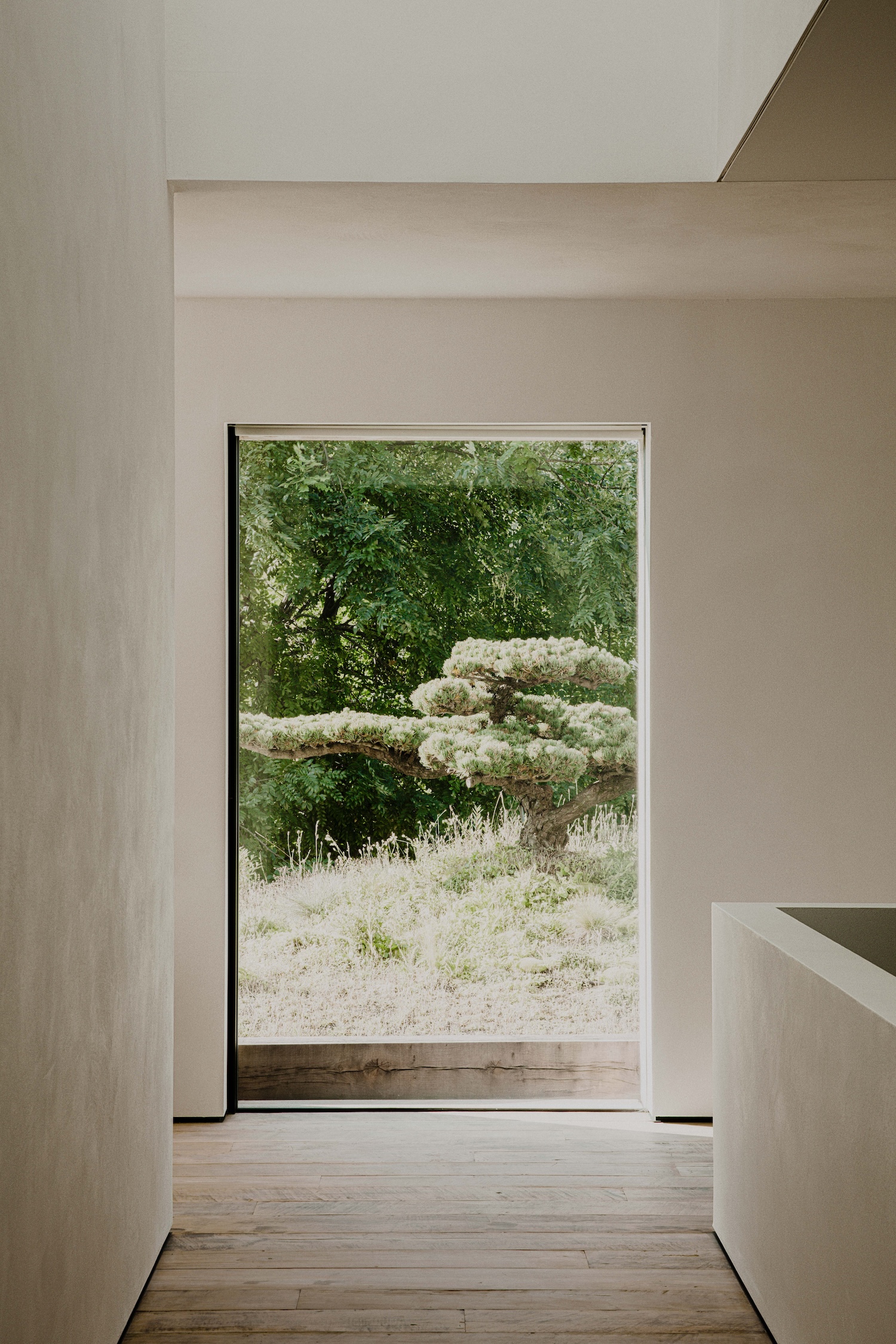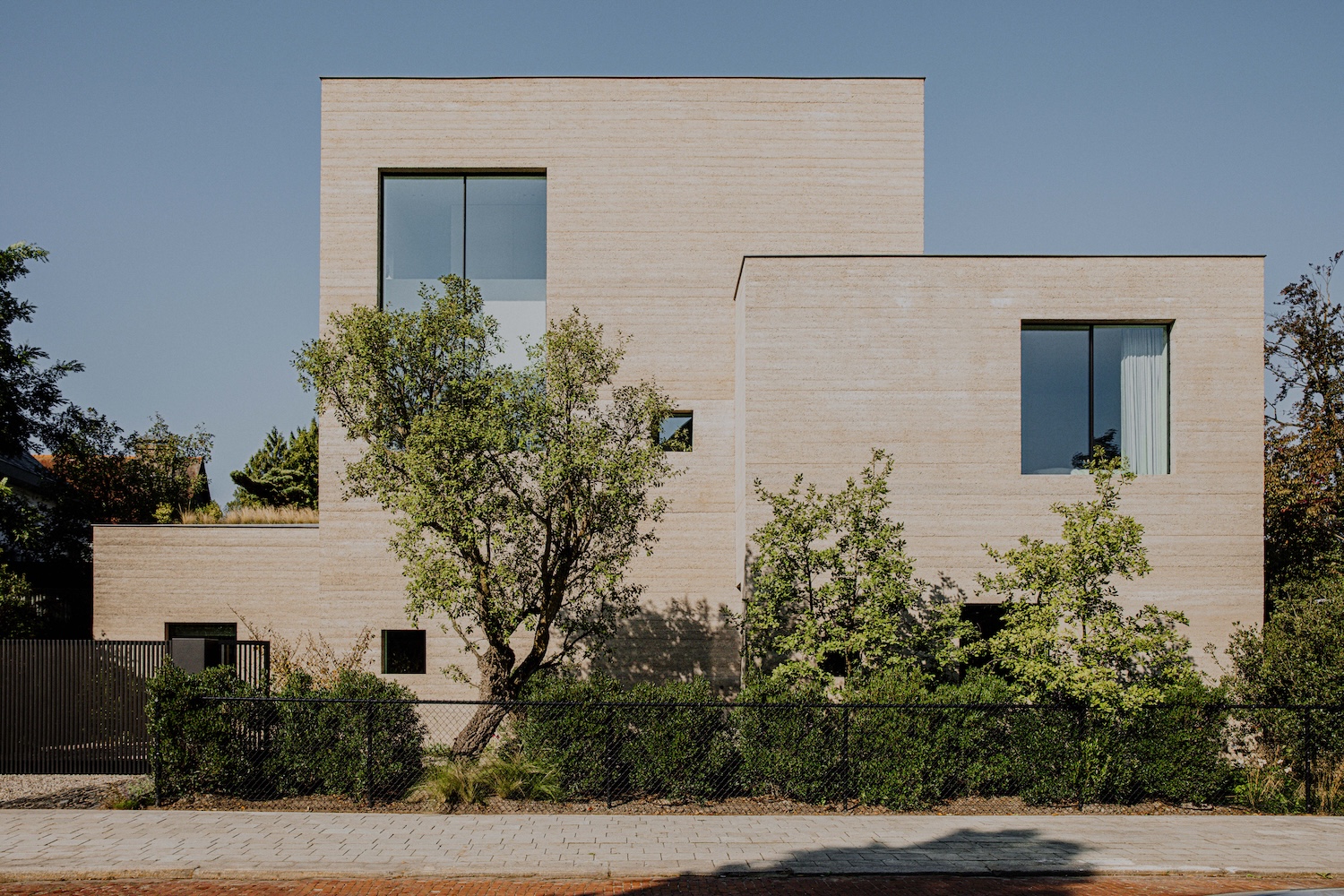H House is a minimal home located in Antwerp, Belgium, designed by Nicolas Schuybroek. Light falls through a perfect circle cut into a wall, casting a golden halo across the pale interior of Nicolas Schuybroek’s H House in Antwerp. This luminous aperture – a James Turrell piece – isn’t merely decorative but represents the philosophical heart of the project: a meditation on presence and absence, on what is revealed and what is withheld.
Schuybroek, whose practice is based in Brussels, has cultivated a reputation for what he calls “timeless minimalism and apparent simplicity.” Yet the H House demonstrates how this restraint belies a sophisticated understanding of material dialogue and spatial choreography. The architecture creates a vessel for both living and contemplation, where art and design objects are given room to breathe.
In the living spaces, low-slung seating hugs the floor while carefully calibrated proportions draw the eye outward through expansive windows that frame the surrounding landscape. A rich brown sofa anchored by earthy green cushions creates a warm counterpoint to the neutral palette of the walls. This chromatic restraint isn’t about austerity but rather functions as a canvas for the client’s impressive art collection, which includes works by Michael Borremans.
“There’s no straining for effect in my work—just a muted elegance,” Schuybroek has said of his approach. This philosophy manifests in the careful selection of furniture pieces that speak to design history without shouting about their pedigree. A wooden desk positioned before a floor-to-ceiling window transforms work into a contemplative act, while a cane-backed chair—nodding to Pierre Jeanneret’s heritage—provides textural contrast to the smooth concrete floors.
The project’s material palette reveals Schuybroek’s “love of unassuming, tactile and raw materials.” Concrete floors meet plaster walls in a seamless conversation, while wooden shelving units and furnishings introduce warmth through their honeyed tones and visible grain. The table lamp—a sculptural presence with its bulbous ceramic base and crisp white shade—demonstrates how even utilitarian objects are elevated to artistic status in this environment.
